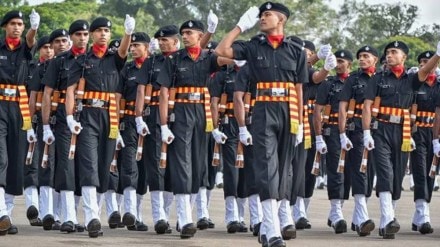As India modernises its armed forces, human resource management (HRM) reforms are crucial to developing a young, agile, and technologically proficient armed force. The Agnipath Scheme, introduced in June 2022, is a cornerstone of these reforms, aimed at transforming the Indian military’s human resource landscape by recruiting and training young individuals, known as Agniveers.
Building a Modern Military: The Role of HRM
Effective HRM in the military is vital for maintaining a capable and modern armed force. Recruitment and training are essential for selecting and adequately preparing individuals to meet the demands of modern warfare. Performance management systems are implemented to appraise, reward, and recognise personnel effectively, ensuring that the military remains motivated and ready for action.
Workforce planning is another critical function that involves forecasting and managing human resource needs to maintain readiness. Developing fair and motivating compensation systems is also crucial for retaining talent and ensuring that the armed forces remain competitive and attractive to potential recruits. These functions collectively ensure that the military remains battle-ready and capable of adapting to evolving security threats.
Agnipath Scheme: Injecting Youthful Energy into the Armed Forces
Under this scheme, youth serve in the armed forces for four years, providing a steady influx of fresh talent. This initiative not only injects youthful energy into the armed forces but also ensures that the military remains financially sustainable.
Strength in Numbers: Recruitment and Expansion
In its initial phase, the Army inducted 40,000 Agniveers, with the Navy and Air Force recruiting 2,700 and 3,000, respectively. With a projected intake cap of 1.75 lakh recruits until 2026, the scheme is set to significantly increase the number of young soldiers. By 2030-32, Agniveers are expected to make up half of the Army’s personnel, reflecting the scheme’s strategic importance in enhancing the military’s youthful profile. This expansion is crucial for maintaining a robust, dynamic defence force that meets contemporary security challenges.
Adapting to the Future: Evolving the Agnipath Scheme
To enhance its appeal, the Agnipath Scheme underwent several revisions in 2023. The upper age limit was increased to 23 years, and eligibility was expanded to include pre-skilled youth and ITI/polytechnic graduates. Additionally, provisions were introduced to attract skilled candidates by offering incentives. Future changes may include increasing the retention rate of Agniveers for regular troops and extending their tenure from four to eight years. These adjustments aim to make the scheme more attractive and effective in retaining talent, ensuring that the armed forces benefit from the skills and experience of Agniveers for a longer period.
Dispelling Misconceptions: Addressing Criticisms with Clarity
While innovative, the Agnipath Scheme has faced criticism. Concerns include the potential erosion of military ethos and fighting spirit, risks associated with a large number of trained but short-tenure soldiers re-entering civilian life, and the perception that Agniveers are a “lesser” cadre of soldiers performing similar tasks as regular soldiers but with fewer benefits. However, reports from various units and formations indicate that Agniveers excel in their duties, with some even outperforming the regular soldiers. This performance underscores the effectiveness of the Agnipath Scheme in maintaining high standards of professionalism and capability within the armed forces.
Pioneering Equality: Gender Inclusivity in the Armed Forces
Gender inclusivity is a critical aspect of military HRM reforms. Historically, women have had limited representation in the military. However, the government has taken decisive steps to increase female participation, such as inducting women into the Corps of Military Police in 2021. The goal is to recruit 1,700 women in a phased manner, promoting diversity and inclusivity within the armed forces. This initiative aims to create a more balanced and representative military capable of leveraging the strengths and perspectives of both men and women.
The Agnipath Scheme is pivotal to India’s ongoing military HRM reforms. By focusing on youthful recruitment and gender inclusivity, the scheme aims to build a modern, agile, and efficient military force. Continuous improvements and adaptations are essential to address criticisms and ensure the long-term success of India’s military modernisation efforts. In a significant milestone for gender equality in the Indian Army, approximately 200 women have joined the ranks of the Agniveers, a bold new recruitment initiative.
Among these trailblazers, around 100 have already been dispatched to their units, performing admirably alongside their male counterparts. Lieutenant General Channira Bansi Ponnappa, the Army’s Adjutant General, announced this historic development, highlighting the inclusion of female police personnel among the recruits. This progress underscores the commitment to fostering a more inclusive and equitable environment in the armed forces. Highly placed military officials have reiterated that, in the HRM domain, the Agniveer (Agnipath) scheme has been a path-breaking manpower intake and management methodology, ensuring a youthful profile and technologically adept soldiers, representing a “rightsizing” approach.
